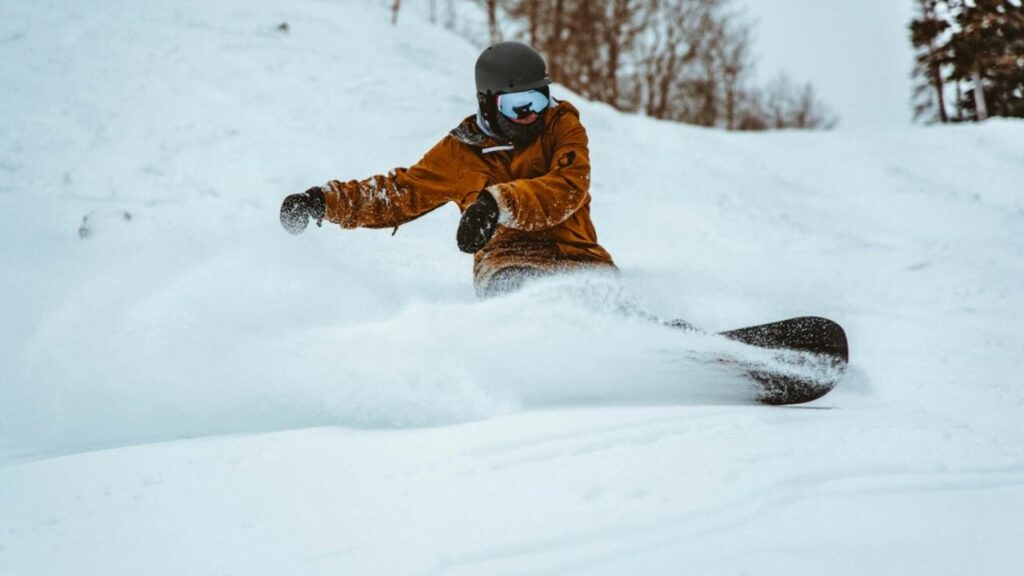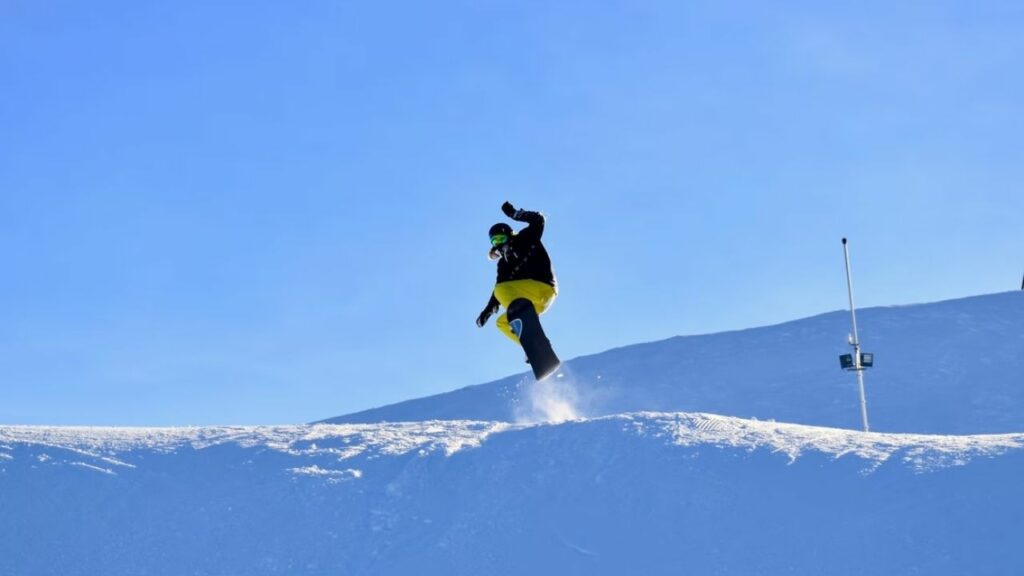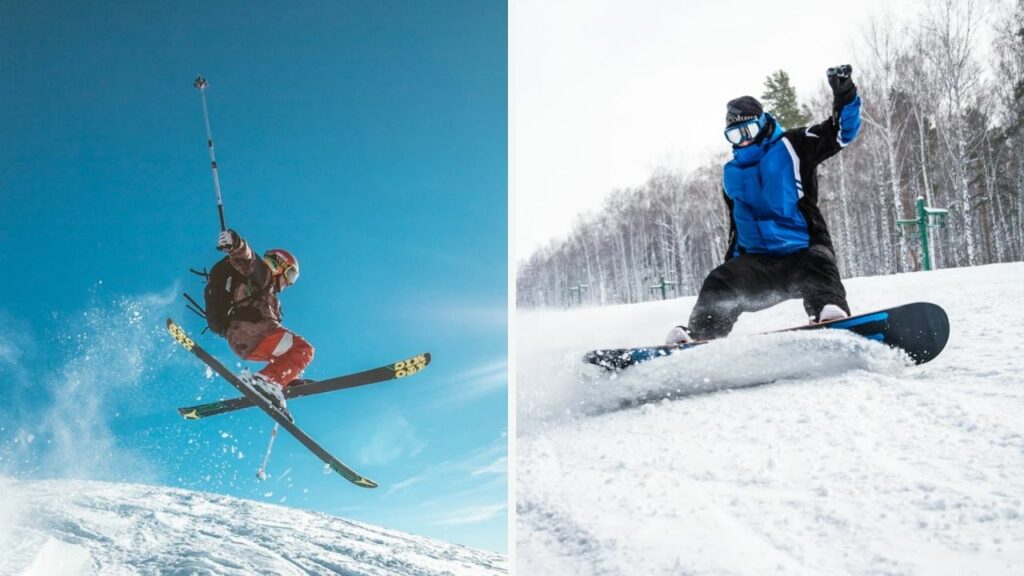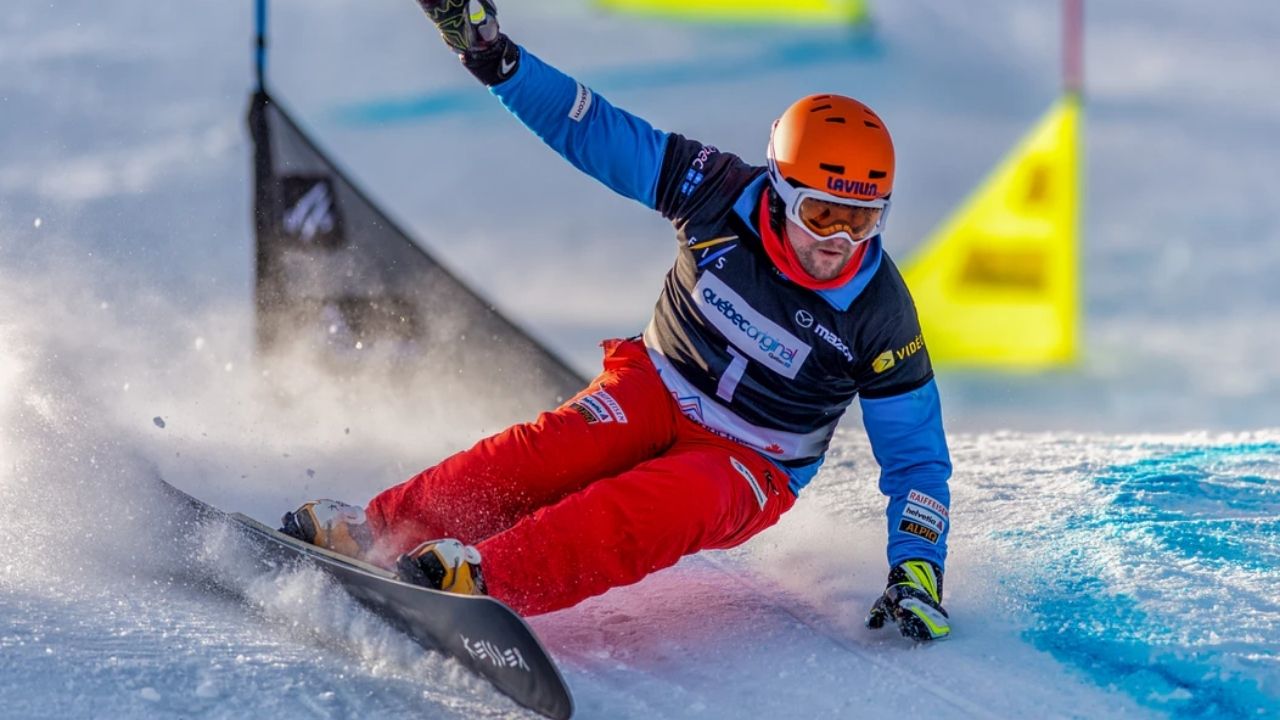Snowboarding is more than sport – it’s an anomaly. It’s fun, intense, healthy, and mentally stimulating. But if you wanna ride wild terrains or compete against other boarders, then it’s gonna take a lot more than physical fitness.
Snowboarding is a full-body workout (especially for the back, legs, and core muscles). It burns calories, improves cardiovascular endurance, increases stamina, and enhances core strength.
Really, snowboarding has countless health benefits. So let’s start with the obvious.
Is snowboarding good for weight loss?
Snowboarding is better for weight loss than most gym aerobics. Downhill snowboarding and skiing burns an average of 300 to 800 calories per hour (even 1000 calories), not including waiting time and chairlift.
On top of its diet-like effects, snowboarding also tones muscles. This physical definition can make you look leaner. So, each time you train – whether on the snow or at home during the off-season – you’re not just practicing foundational techniques, tricks and language. You’re also getting in shape and losing weight each time.
As you advance to intermediate/advanced status on steeper and rougher terrains, you’ll burn even more calories. It’s much, MUCH harder to keep your weight over the board and make smooth round turns when you’re faced with faster slopes, super-high pressure on your board, and super-intense maneuvers. As you apply more pressure and get more response from your board, you’re enabling oxidized fat to get broken down faster.
Not to mention all the flexibility and strength involved in reducing chatter and instability in turns. For snowboarders to maintain that balanced, centered riding posture, they’d need an awfully high level of mobility and stability.
1. Does snowboarding get you ripped?
“Getting ripped” means having a sculpted and toned look with well-visible, well-placed muscles. Like having six-pack abs, for instance.
Can boardin’ get you ripped then? It’s debatable. riders with more experience will usually get a better workout than beginners.
Snowboarding engages nearly all muscles in your lower body but has limited direct up doesn’t upper-body workout. naturally flexes the core, but it’s not much of an upper-body strength workout when snowboarding.. The activity is heavily ou can also get some abs through snowboarding and eating properly, but getting ripped might not be possible.
2. Other Health Benefits of Snowboarding
A. Stronger Lower Body & Improved Flexibility
Throughout your snowboarding experience, you’ll be slightly crouched most of the time, which requires a lot of strength. Slowly and steadily, snowboarding can make your lower body muscles much stronger and more flexible overall.
It’s especially helpful for quads, hamstrings, glutes, and calves. And your flexibility will automatically increase as you practice balancing and crouching while going downhill.
Remember that good flexibility can reduce muscle stress and prevent major snowboarding injuries.

B. Develop Body Strength
Snowboarding is ideal for developing body strength as it works with almost all muscles directly or indirectly. To sum up, you can lose weight, develop strength and tone your muscles through snowboarding.
The final outcome depends on your diet and other nutritional needs alongside the doctor’s car.
C. It Strengthens Your Muscles & Joints
It’s amazing, isn’t it?
Snowboarding can help prevent osteoporosis and other knee injuries due to old age. It can do so because of the constant breakage and re-formation of muscles and joints as you go out for a snowboarding trip.
D. It’s a Dopamine Factory
People thoroughly enjoy snowboarding, especially here in the States. It’s because snowboarding can help release some dopamine, reducing stress and increasing good mood. It also releases endorphins, so you get double the happiness at the price of one.
Why do knees hurt after snowboarding?
Knee injuries (minor and major) go hand in hand with snowboarding. About 70% of knee injuries during snowboarding are on the leading leg. This indicates improper balance and unnecessary pressure.
ACL (anterior cruciate ligament) is the most common knee injury from a torn ligament. It mostly happens after jumps and other stunts without proper supervision.
So, if your knee hurts at any point after snowboarding and the pain persists, get yourself checked immediately. Better to be safe than sorry.
How to train for snowboarding to prevent injuries?

Training is essential to get down the hill quicker with fewer falls.
As a beginner, you should focus on three major fitness areas – strength training for control and maneuvering, cardiovascular training for stamina and breathing, and flexibility exercises for tricks and preventing injuries.
Here are some basic tips:
- Don’t forget to hydrate regularly.
- Warm up and stretch properly before each snowboarding session.
- Try and build the strength and stamina for snowboarding atleast a couple of weeks before you start the sport. It’ll prepare your body for dynamic movements.
- Learn to rest properly. Being hasty won’t make you a good snowboarder, but it’ll surely injure you.
- Increase the intensity of your training gradually. Exercise appropriately for your body instead of choosing the most hardcore and “cool” ones.
How fit do snowboarders need to be?
You MUST be physically fit to be able to ride a snowboard safely. To be clear, your weight (and, in most cases, BMI) has nothing to do with it.
You need good leg strength, enough to be able to support and maneuver your body weight. And you must know how to balance yourself while moving at high speeds. You are physically fit for snowboarding if you have strong legs and core.
So, yes, your ability to snowboard is independent of your body weight in most cases. Rest, you must follow what we discussed – stretch properly before a session and keep building your body strength.
1. What age should you stop snowboarding?
Putting the fun part aside, snowboarding is a demanding sport. You’ll need good stamina and a lot of practice to enjoy it thoroughly.
And there’ll come a time in your snowboarding career when you’ll think, “I’m too old for this s**t!” But let me tell you that you’re not. The issue might just be your overall health or a hidden injury.
You don’t necessarily need to stop snowboarding at any age, provided you’re actively trying to stay healthy and injury-free. Snowboarding doesn’t discriminate with age, but it does with fitness. A physically-fit older adult can snowboard easily after learning the basics.
Look at these guys. As of 2012, they were snowboarding at 64 years and 80 years, respectively:
2. Can a 40-year-old learn to snowboard?
Now, this is where things get trickier and largely dependant on individual traits.
Snowboarding at the age of 40+ is completely different from learning at that age. As a snowboarder, you know how to shift your weight and balance your body, so age is inconsequential. But you’re more likely to get injured and break a bone as an old beginner.
Of course, you’ll need to invest time in practice, eat healthily, and stay fit—however, the key to learning to snowboard at 30, 40, and 50+ years of age. Accept that your bones might not be as strong as they used to be and take things at an affordable pace.
Get used to sitting and crouching for long periods. Learning to fall safely on your knees is the hardest for newcomers. Hence why hip, back, and neck injuries are so common among older beginners. And, of course, knee injuries.
Which is easier on the body, skiing or snowboarding?
More often than not, snowboarding is a nightmare for absolute beginners. You have this “cool” sport you always wanted to learn but just can’t stay upright on the snowboard.
In comparison to snowboarding, skiing has a much steeper learning curve. Skiing is quite easier on the body for beginners but mastering the precise movements requires a lot of practice and time.
When you start skiing, your legs are separated, making it easier to maneuver and balance. That’s why beginners get used to it quickly, but as your speed increases and techniques get harder, it’s hard to align both feet properly so you don’t fall.
On snowboarding, you just need to get the hang of being on a single board and create balance. Techniques become easier once you’re through with the basics if you warm up properly and pay attention. Mastering advanced snowboarding techniques is relatively undemanding if your fundamentals are strong.

Which is a better workout: Skiing or Snowboarding?
The debate between snowboarders and skiers about who has the better snow sport has been going on for a long time. And it looks like it won’t be ending any soon.
Let’s start with some good ol’ facts from Harvard Medical School. They studied back in 2021 and tabulated the total energy burnt by people from different weight classes playing various sports.
Calories burned after a 30-minute session.
| Gym Activities | 125-pound person | 155-pound person | 185-pound person |
| Skiing (downhill) | 180 | 216 | 252 |
| Skiing (cross-country) | 198 | 246 | 293 |
Unfortunately, Harvard didn’t test snowboarding. Still, this table gives a good insight into calorie consumption differences.
The number of calories you consume will depend on the person, age, body composition, and exercise intensity. Snowboarding can have a higher average calorie consumption, but you, as an individual, might get more benefits from skiing instead.
According to a non-profit, Snowsport Industries America, skiing approximately burns 500 calories an hour while snowboarding only burns 450. Note that such a small difference can just be an experimental error.
Other studies have proved that you can burn 290 to 806 calories every hour while snowboarding, but only 480 to 710 for cross-country skiing.
You can say that skiing burns more calories than snowboarding, even at low-intensity sessions, but that would only be a blanket statement. Not an absolute one.
Although, if you’re interested in such rough approximation numbers, enjoy counting your estimated calories.
So, it all boils down to which sport you prefer participating in as both are more or less equal in regards to calorie consumption. Matter of fact, many professionals suggest learning and dabbling in both skiing and snowboarding, especially if you’re intentions are purely health-based.

